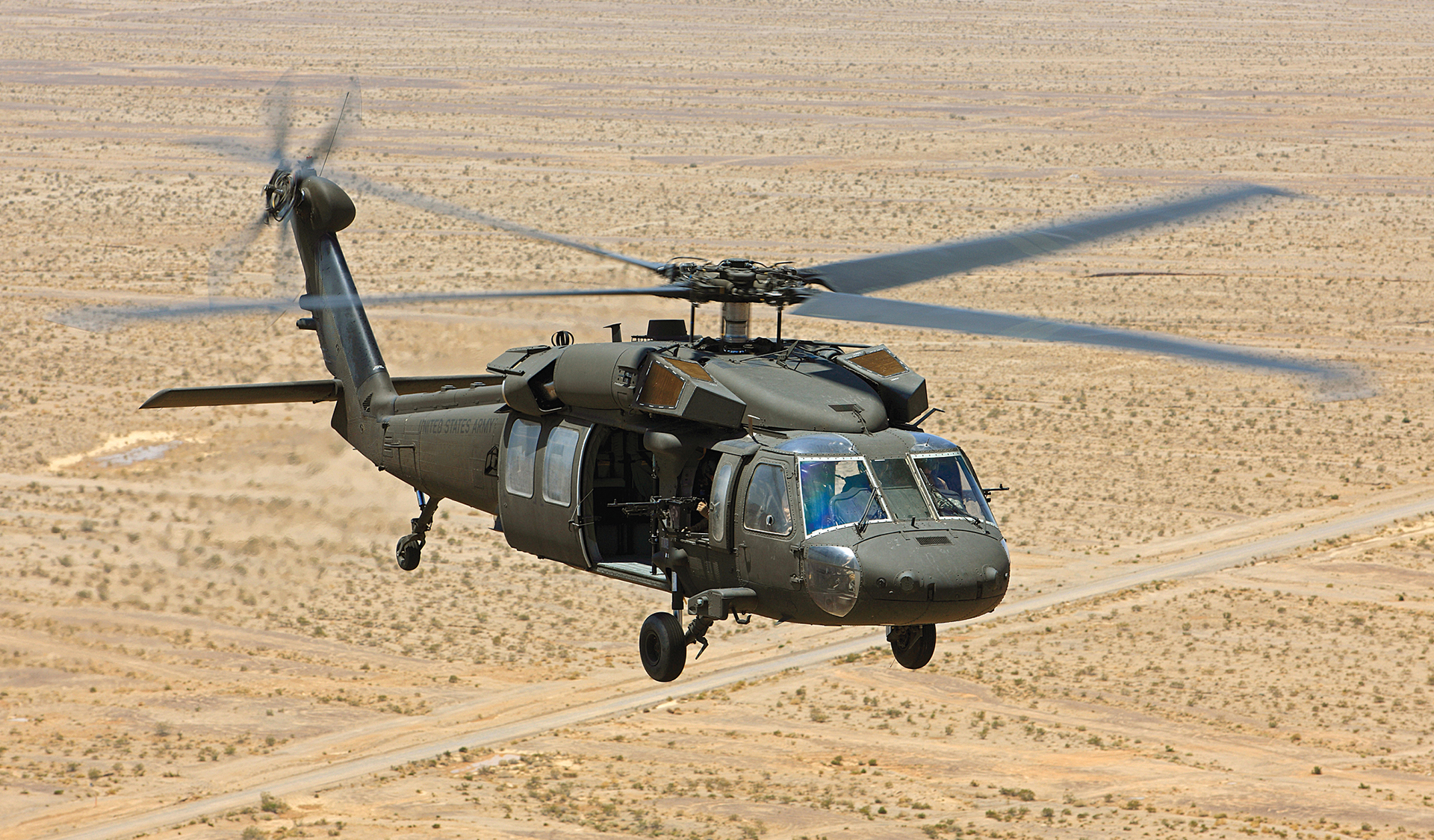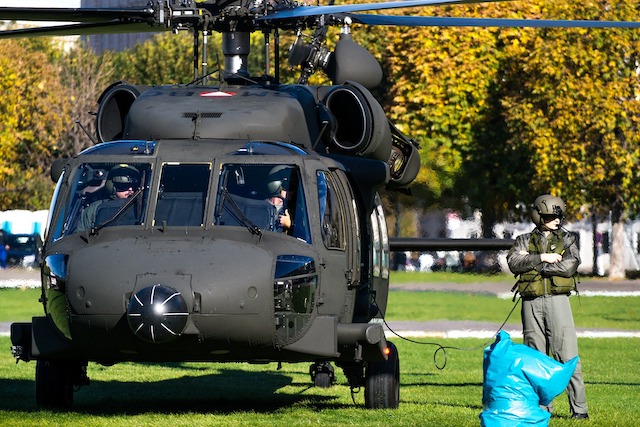Making Sure Preparedness: UH-60 Blackhawk Maintenance and Readiness Protocols
Making Sure Preparedness: UH-60 Blackhawk Maintenance and Readiness Protocols
Blog Article
Exploring the Background and Advancement of Uh 60 Helicopters
The development of UH-60 helicopters stands as a testimony to the unrelenting search of advancement in aviation technology. From their simple starts to turning into one of the most flexible and widely utilized aircraft in military operations, the trip of these helicopters is an interesting one. As we look into the background of UH-60 helicopters, we discover not simply a timeline of advancements yet also the essential duty they have actually played in forming modern-day warfare. Join us as we uncover the interesting tale behind the UH-60 helicopters and explore the effect they proceed to carry army techniques and procedures worldwide.
Early Origins and Development
The early origins and growth of the Uh-60 helicopters can be mapped back to the requirement for a trusted and flexible airplane for different military operations. In the late 1960s, the United States Military identified the restrictions of existing helicopters and initiated the Utility Tactical Transportation Aircraft System (UTTAS) program to develop a new generation of energy helicopters. This program intended to deal with the drawbacks of older helicopter models by integrating sophisticated innovations and improved efficiency capacities.

Intro of the UH-60 Black Hawk
With the UH-60 Black Hawk's entrance into service, a brand-new era in armed forces aviation dawned, noting a significant development in capabilities and versatility for the USA Army. Introduced in 1979, the UH-60 Black Hawk was made as a multi-mission helicopter to replace the aging fleet of UH-1 Iroquois helicopters. The Black Hawk's advanced functions, including twin engines for enhanced power and survivability, a four-blade main blades system for enhanced lift performance, and a sizable cabin efficient in suiting up to 11 completely furnished troops, reinvented the Army's air assault and energy capabilities.
The UH-60 Black Hawk rapidly verified its worth in a range of missions, from army transport and clinical emptying to special operations and search and rescue. Its flexibility and dependability were additional demonstrated during Procedure Urgent Fury in Grenada in 1983 and the intrusion of Panama in 1989. The Black Hawk's success caused its widespread adoption not only by the U.S. Army yet likewise by many various other army forces and government companies worldwide.

Technical Innovations Over the Years
Throughout the evolution of the UH-60 Black Hawk helicopters, considerable technical advancements have constantly boosted their performance and capacities. Among the vital improvements is the assimilation of innovative avionics systems, consisting of electronic cabins with multifunction displays, trip monitoring systems, and progressed communication systems. These enhancements have not only boosted the situational understanding of the team however have likewise streamlined the overall procedure of the airplane.

In addition, the fostering of extra effective engines has actually considerably enhanced the UH-60 Black Hawk's speed, maneuverability, and lift capability. The most up to date models are geared up with much more efficient turboshaft engines that offer greater power outcome while maintaining gas performance.
Function of UH-60 in Military Operations
Having undertaken considerable technological developments for many years, the UH-60 Black Hawk helicopters play an important role in numerous armed forces operations as a result of their adaptability and dependability. These helicopters are widely made use of for missions such as troop transportation, medical discharge, air assault, and unique operations. The UH-60 is particularly valued for its capacity to operate in More Help varied atmospheres, varying from complicated urban settings to rugged terrains, supplying military pressures with an extremely versatile aerial system.
One of the key toughness of the UH-60 is its capacity for quick deployment and removal of soldiers in fight areas, enhancing functional efficiency and adaptability for armed forces leaders. Additionally, its robust building and construction and advanced avionics systems contribute to its performance in tough conditions, making sure mission success even in aggressive environments. The UH-60's duty in sustaining ground forces, conducting reconnaissance objectives, and providing logistical support more underscores its relevance in modern military operations. Generally, the UH-60 Black Hawk helicopters continue to be vital assets for armed forces worldwide, enabling them to attain their goals with accuracy and performance.
Modern Applications and Future Prospects
In the modern landscape of army procedures, the UH-60 Black Hawk helicopters proceed to show their flexibility and tactical relevance with innovative modern technologies and advancing goal capabilities. One of the key modern applications of the UH-60 is its essential role in medical emptying missions, where its flexibility and speed contribute in promptly delivering hurt workers from the battleground to medical facilities. Furthermore, the UH-60's advanced avionics systems and enhanced ability to move make it a useful possession in special operations, including insertion and removal of special forces in aggressive settings.
Looking towards the future, the UH-60 system is positioned to undertake further advancements to enhance its capacities. As military demands progress, the UH-60 Black Hawk helicopters are anticipated to adjust and innovate to satisfy the obstacles of tomorrow's functional settings.
Conclusion
To conclude, the background and advancement of UH-60 helicopters have been marked by considerable advancements in innovation and their critical duty in army procedures. From their early origins to their contemporary applications, these helicopters have constantly adapted to satisfy the transforming demands of the armed force - uh-60 blackhawk. With recurring advancements in modern technology, the future potential customers for UH-60 helicopters stay appealing as they remain to play an essential duty in various military objectives
Sikorsky Airplane Firm, a popular helicopter producer, responded to the UTTAS program's needs by making the UH-60 Black Hawk helicopter. Presented in 1979, the UH-60 Black Hawk was created as a multi-mission helicopter to change the aging fleet of UH-1 Iroquois helicopters.Having undergone substantial technical advancements over the years, the UH-60 Black Hawk helicopters play an image source essential duty in my website various army procedures due to their flexibility and dependability.In the contemporary landscape of military procedures, the UH-60 Black Hawk helicopters continue to demonstrate their versatility and calculated importance through sophisticated innovations and developing mission capacities. As armed forces requirements advance, the UH-60 Black Hawk helicopters are anticipated to innovate and adjust to satisfy the challenges of tomorrow's functional settings.
Report this page